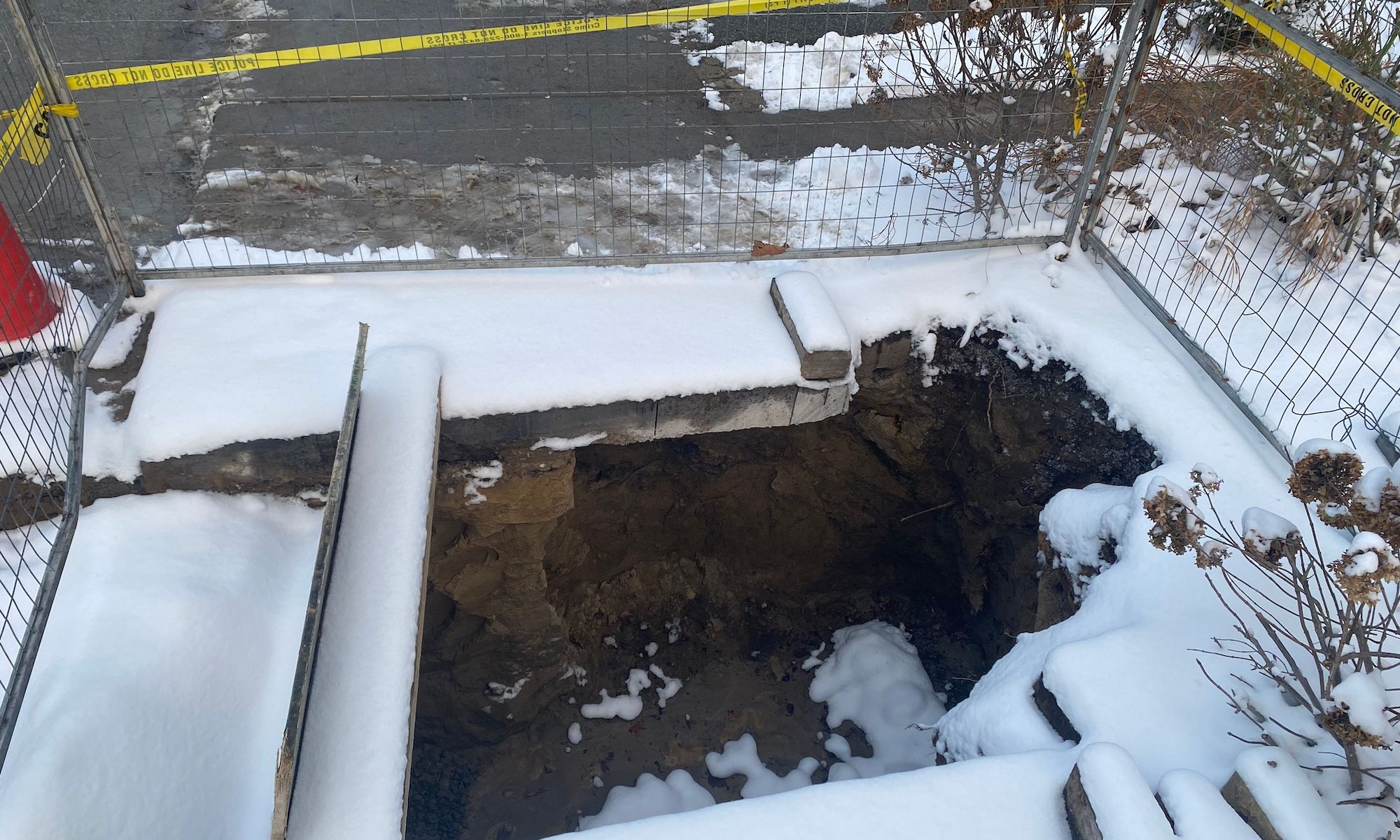Site of the Withrow Avenue excavations that uncovered part of a First Nations burial ground in Toronto Courtesy Philip Cote
The city of Toronto has confirmed that ancient human remains unearthed by a construction crew last week were from an Indigenous burial ground. According to a statement the crew made the discovery on Friday (5 January) while working on a water service line on Withrow Avenue, a residential street near Toronto’s Greektown.
But Greg Olsen, the forensic anthropologist who confirmed the remains were those of Indigenous individuals when he visited the site on 6 January, was not surprised by the discovery. “There seems to be a run on them,” he says. “This is my fifth confirmation of a Native burial site in the Toronto area in the past four months.” Since homeowners must cover the costs of archaeological assessments and remediation, he says that there may be many similar sites that have yet to be formally recognised.
The current site is located only ten metres away from a plaque marking another archaeological discovery from 1886, when members of the Canadian Institute who were founders of the Royal Ontario Museum (ROM) conducted an excavation on what came to be known as the “Withrow Site”.
According to a 1986 article written by Mima Kapches, an archaeologist at the ROM, for the Ontario Archaeological Society journal, commemorating the centenary of the Withrow Site’s “discovery”, an earlier date is possible. Olsen made use of the article in determining the provenance of the remains.
According to late-19th-century newspaper sources Kapches cited, at the Withrow site—which overlooks the Don River on an elevated sandy embankment—“upwards of 30 skeletons seem to have been buried in one pit, and as many more in another a few yards off”. Also found by archaeologist David Boyle at the time were a small stone axe, a stone chisel, knife and a barbed arrowhead.
“The work was not meticulous and many of the remains were lost,” the plaque at the site states. “More than 200 years of development have destroyed much of the archaeological evidence of the Indigenous presence in this area.”
Aware of the previously discovered communal ossuary, Olson says he found a box of “fragmented long bones” at the new site. He adds that, in the sidewall of the recently dug trench, “I could see human bone extending deeper into the sidewall. I started to remove some of the bone to see what I could determine—but it began to crumble in my hand. I worked my way back and found a portion of jaw with teeth and found some central incisors that had fallen out.” He says it was tooth morphology—notably Indigenous peoples’ “shovel-shaped incisors” and molars worn down by a diet of maize with bits of rock grit—that helped him determine they were remains of First Nations people. He says he also saw an object “that looked like a spearpoint” or “some sort of tool”.
Although the 1986 article and the plaque state that the site contains remains and artefacts that are up to 7,000 years old, Olson says the remains found last week are likely only 700 to 1,000 years old.
But First Nations historian Philip Cote, who conducts bus tours of ancient Indigenous sites in Toronto, says that “ancient Ojibway people stood on these grounds 7,000 years ago. Later on people known as the Anishinaabe, Mississauga and then the Wendat, Petun and Nuetral and Seneca arrived to take part in the largest trade networks in North America stretching from Toronto to the Northwest Territories down to Central America and back up through the Great Mississippi River to the Ohio River to Lake Erie and on to Toronto. Elders say the trade network has been operating for over 5,000 years.” He believes the area around the Withrow Site was once an Ojibway village.
While the new archaeological site is now in the hands of the provincial Bereavement Authority, who are consulting with leaders of the Six Nations and Mississaugas of the Credit First Nation who share treaty rights to the land, Cote hopes it can become an educational opportunity that will include plaques with First Nations as well as archaeological history. “They should find out the name of that ancient village and rename Withrow Avenue,” he says. Meanwhile, he is “advocating for local politicians to create protection policies to save and mark these sites”.

